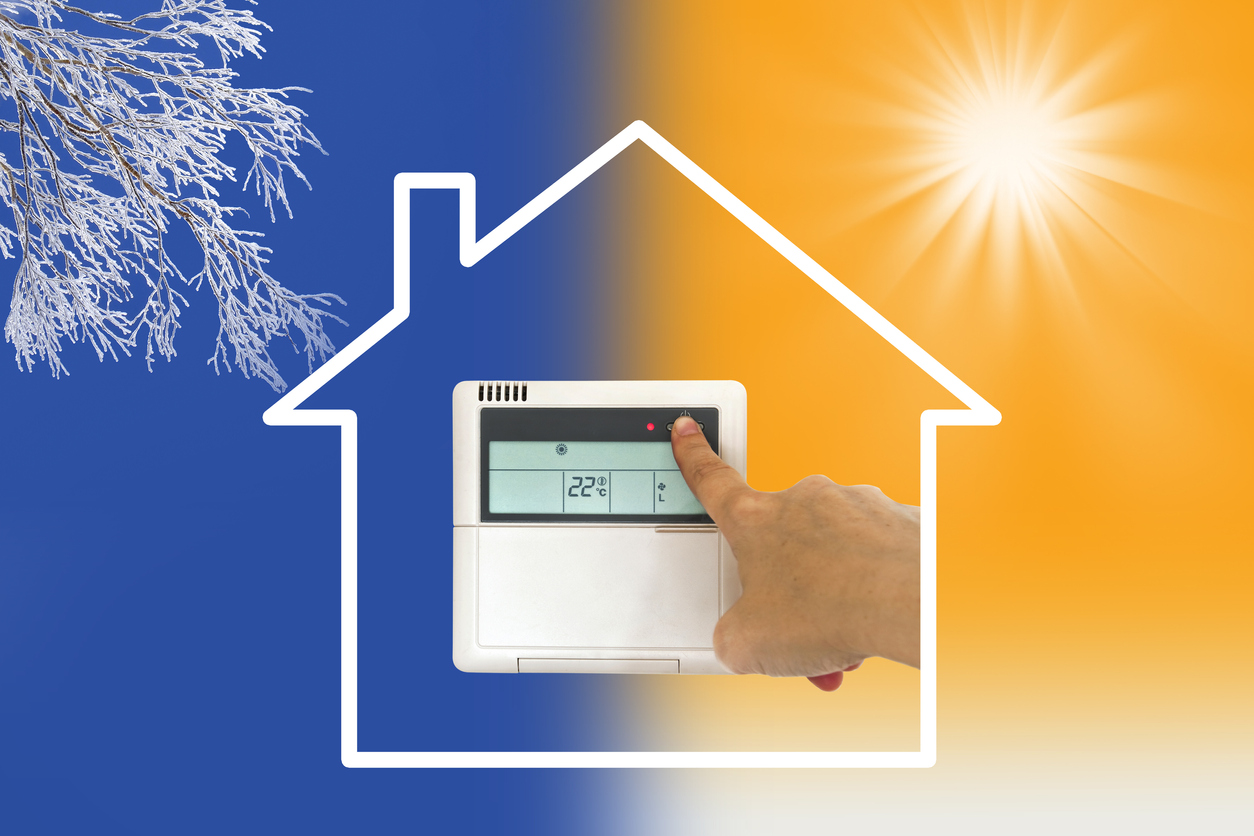One room in your house is ice-cold. The other is sweltering hot. Don’t worry it’s not paranormal activity. It’s a problem called a temperature imbalance. This means your house’s climate is inconsistent. When your HVAC air is balanced, it prevents erratic temperature fluctuations from room to room. Find out what could be creating warm and cold spots in your home and what can be done about it.
Your Air Filter is Clogged
A clogged filter weakens your system’s airflow, causing cold and warm spots in your house. It’s a good rule of thumb (and an easy fix) to clean your filters every two weeks and replace them monthly.
Your Thermostat is Installed in the Wrong Place
Your thermostat’s job is to take average readings, and it does this when placed in a central location. However, if it’s near a heat source, it will read that rather than the actual room temperature. Keep your thermostat away from:
- Lamps
- The kitchen
- Computer equipment
- Television
- Windows
Also, if you have an old-fashioned, manual (analog) thermostat, it will be unable to distribute the temperature throughout your house evenly. Consider swapping it out for a programmable thermostat that will be more accurate and give your home better coverage.
Your House is Poorly Insulated
Inadequate insulation can drastically affect your home’s temperature balance. Improperly installed or deteriorating insulation in your walls, attic, roof, or ceiling can create drafty areas that can’t be adequately heated or cooled. Improperly insulated doors and windows can also cause uneven temperatures.
You Have a Multi-Level Home
Houses with multiple levels are challenging to balance because you need to factor in the rising heat and extended lengths of ductwork. Temperature imbalances in multi-level homes can be solved by installing a zoned heating and cooling system. Zoning operates on the same principle as a light switch – instead of one light switch for your entire house, there are switches for every room. With zoning, there are separate thermostats for various zoned areas of your home.
In addition to keeping a multi-level home comfortable, zoning is helpful if you have the following:
- Family members with different heating and cooling preferences.
- Vaulted ceilings.
- Rooms with large glass windows and doors.
- A ranch-style home with areas branching off from the center.
Your Windows Are Uncovered
Did you know that 30% of heat is lost through windows in winter? Similarly, 76% of direct summer sunlight can affect room temperature. Your HVAC is then forced to work harder, creating unbalanced air in the home. Counteract this by hanging drapes, blinds, or cellular shades (shades made of pleated material) or applying window film insulation (which resembles the window film you may have seen on cars).
There Are Gaps Around Your Windows
Hot or cold air seeping through cracks around windows can cause uneven temperatures throughout your house. Weatherstripping, caulking, or low-expansion spray foam insulation can help hinder drafts.
Your System is Improperly Sized
Each residence maintains a specific size for its HVAC system. If your heating or cooling system is too small, it may not be able to heat or cool the house effectively, and if it’s too big, it will shut off before it’s made a difference.
Your Ductwork is Crumpled
If your ductwork is crumpled, creased, pinched, or kinked, it will have difficulty transporting air where it needs to go. You’ve probably used a kinked garden hose that won’t carry water until you’ve straightened it out. Similarly, pinched ductwork will struggle to transport air, resulting in uneven heating and air conditioning.
You’ve Renovated Your Home
When you remodel or add rooms to your house, it can unbalance your HVAC system. This is especially true if walls are removed or added. If you’ve included a sauna, hot tub, or sunroom, they can also affect your home’s temperature balance.
You Have Rooms Near Unfinished Areas
Garages, basements, and attics often need to be completed. They may be cooler or warmer than the rest of your house. This can affect nearby rooms, making it challenging to keep these areas comfortable.
Your Supply Air Vents Are Clogged or Closed
Check the air vents in the rooms that are colder or hotter than the others. They may be closed or blocked. If dust buildup, curtains, or furniture obstruct the vents, they won’t be able to distribute the air in your home evenly. Ducts should have at least a foot of clearance around them.
Your HVAC System is Old
Uneven heating and cooling could indicate that your system is too old to provide your home with consistent temperatures. If your HVAC is over 15 years old, it may be time to get a replacement.
You Have Single-Pane Windows
Single-pane windows have only one pane of glass. They tend to make rooms too cold in the winter and too hot in the summer. They can be replaced with energy-efficient, double-pane windows to help balance your house’s temperature.
Contact Us
Are you tired of hot and cold spots in your home? Well, you don’t have to live with them anymore. Progressive Air Systems’ technicians are trained professionals who are no strangers to temperature imbalances and effectively resolve them. Give us a call today!

